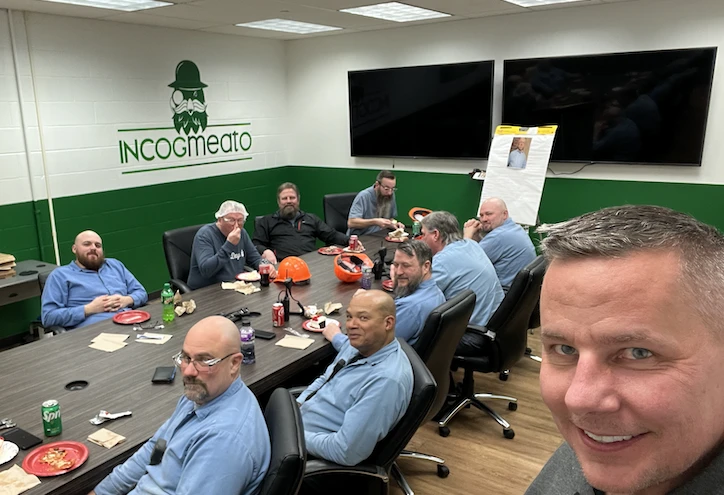From Maintenance Technician to Plant Leader: What It Takes to Thrive
By Cecil Richards
Senior Maintenance & Reliability Manager
“I’ve always believed that when you’re passionate about what you do, the possibilities are endless. That belief has shaped my 22-year career and brought me to where I am today as Senior Maintenance & Reliability Manager at one of our plants. Every step along the way has been shaped by opportunities to learn, innovate, and lead—all while working with some of the most iconic food brands in the world.”
Starting My Journey
My path began when I applied for a Multicraft Maintenance position. When I got the call offering me the role, I was overjoyed. My job was to maintain packaging and processing equipment, something I had never done before. Fortunately, the team taught me everything I needed to know.
From day one, I was hooked. I’ve always had a hunger to learn, especially when it comes to mechanical and electrical technology. That passion helped me earn a lead mechanic role during a plant expansion, which was just the first of many opportunities that came my way.
Growth Through Constant Learning
Over the years, I’ve worn many hats—Crew Leader, Maintenance Planner, Master Planner, and now Senior Maintenance & Reliability Manager. Each role came with new challenges and skills to learn, from managing projects and contractors to mastering tools like computer-aided drafting and machining.
Whether it’s learning new software like SAP and Excel or diving into advanced engineering concepts, I’m constantly learning new things and exploring all aspects of the business. From collaborating with engineering and procurement teams, testing new equipment, and managing capital projects, I’ve continually expanded my skill set.
“Every day brings something new—new equipment, new challenges, and new chances to grow. Even after two decades, I’ve never been bored. Our plant is constantly evolving, and that energy keeps me motivated.”
Innovating With Impact
One of my proudest achievements was leading the development of mini corn dogs—a project that saved the company significant time and money. Instead of waiting nine months for an expensive solution, I developed and implemented a plan in just 10 weeks for a fraction of the cost. I handled the engineering, documentation, and parts manufacturing, acting as project manager and even doing some of the work myself. Seeing the final product on shelves was incredibly rewarding.
Recently, I led a team in designing and building a custom CNC (Computer Numerical Control) router machine, a type of automated cutting tool that can carve and shape materials like wood, plastic, or metal with precision. We used it to create tool boards for our plant, helping to organize and streamline equipment maintenance. We designed the machine from scratch, learning and implementing new technology throughout the process. Seeing it in action has been incredibly rewarding—a reminder of how creativity and teamwork can drive innovation.
“While every plant operates differently, working in a plant role requires more than technical skills—it’s about communication, passion, and the drive to learn. Some of the most successful people I’ve worked with weren’t necessarily the most technically savvy, but they were excellent communicators and motivators.”

What It Takes to Thrive
If you’re considering a career at one of our plants, my advice is simple: find your passion. A career in the skilled trades of supply chain is a land of opportunity, but you have to be willing to work hard and pursue the path that excites you. We value a willingness to learn as much as existing skills, so don’t be afraid to take the leap.

